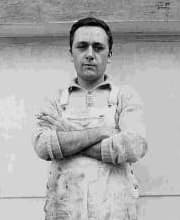
Gerhard Richter
@gerhard-richter
Gerhard Richter: Master of Modern Complexity
Gerhard Richter stands as one of the most influential and prolific artists of the contemporary age. Born in Dresden, Germany in 1932, Richter has spent over seven decades creating a staggering body of work that defies easy categorization. His artistic practice encompasses painting, photography, drawing, and printmaking, demonstrating an insatiable curiosity about visual representation and the nature of art itself.
Richter initially emerged from the East German artistic scene, co-founding Capitalist Realism, a movement that critiqued both socialist and capitalist societies through deadpan, meticulously rendered imagery. This early work drew inspiration from photographs and mass media, establishing his signature approach of translating ordinary source images into large-scale paintings. Works like "Uncle Rudi" and "Betty" exemplify this practice, where personal and historical photographs become vehicles for exploring memory, identity, and authenticity.
Throughout his career, Richter has consistently reinvented his practice, simultaneously pursuing figurative paintings, abstract compositions, photo-based works, and squeegee paintings. His abstract paintings, created by dragging pigment across canvas, introduce controlled chance into the creative process, challenging traditional notions of artistic intention and authorship. This conceptual rigor, combined with technical mastery, has earned him international recognition.
Richter's legacy profoundly influences contemporary art through his questioning of representation itself. He demonstrates that painting remains vital in the age of photography and digital media by interrogating what images mean and how we perceive reality. His commitment to exploring multiple visual languages simultaneously has inspired generations of artists to resist stylistic limitation.
Now in his nineties, Richter's comprehensive retrospectives worldwide continue attracting massive audiences, confirming his status as a towering figure whose work addresses fundamental questions about perception, memory, and artistic meaning that remain urgently relevant today.